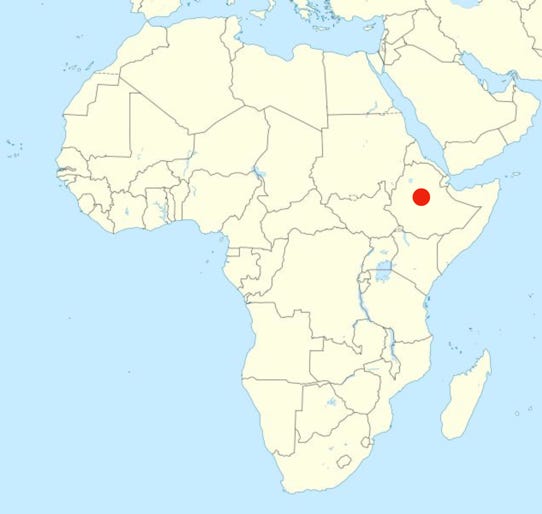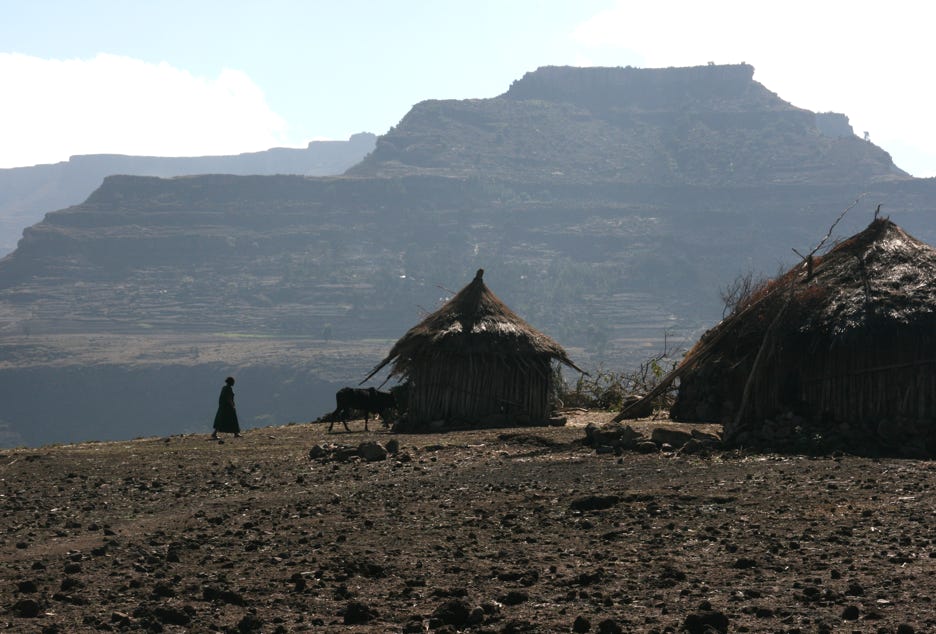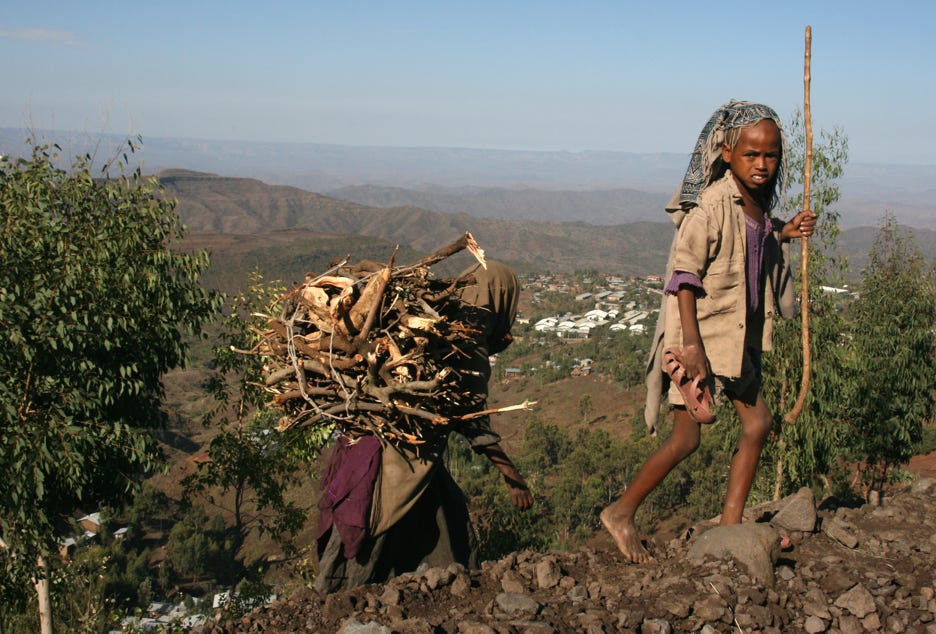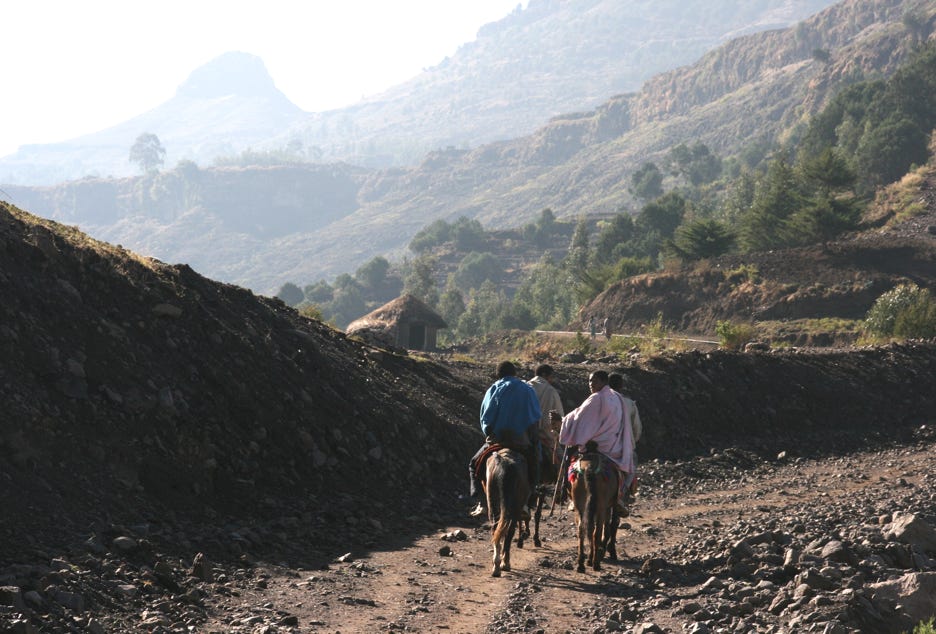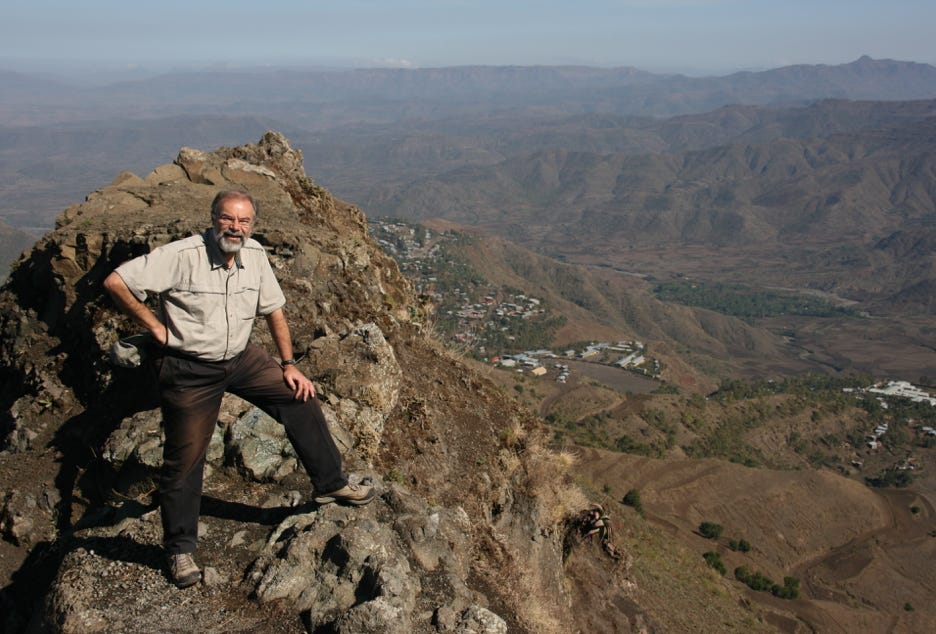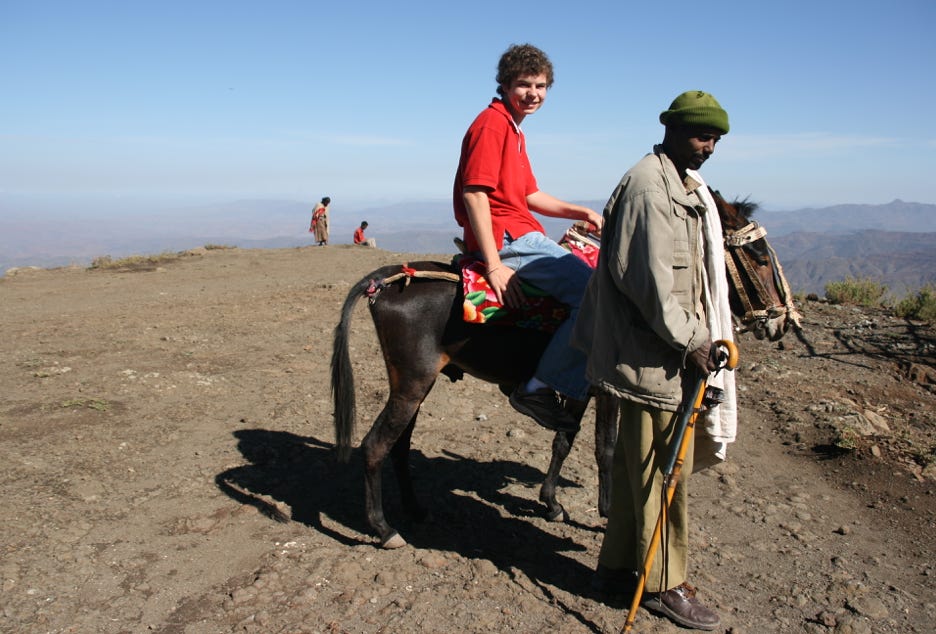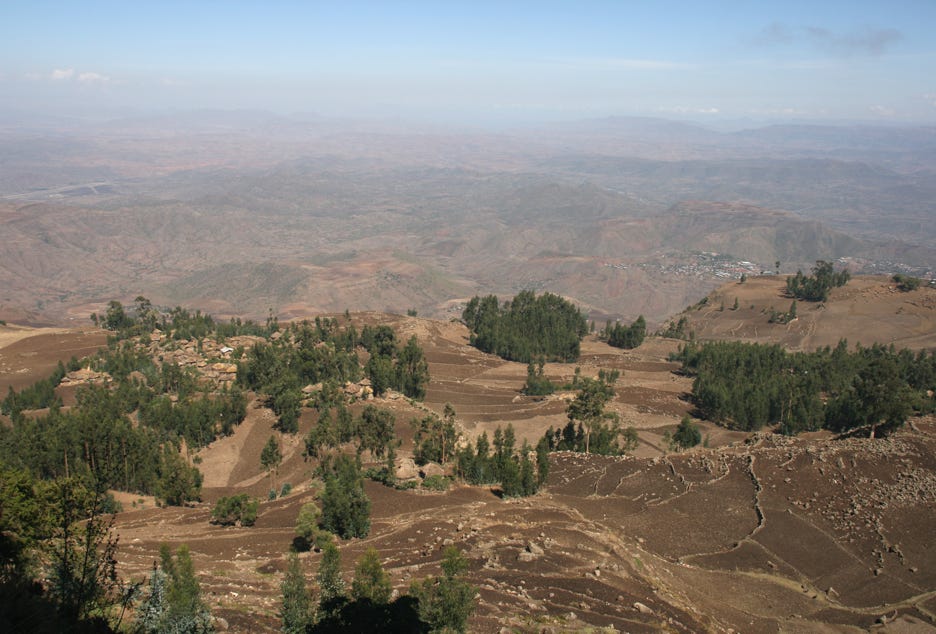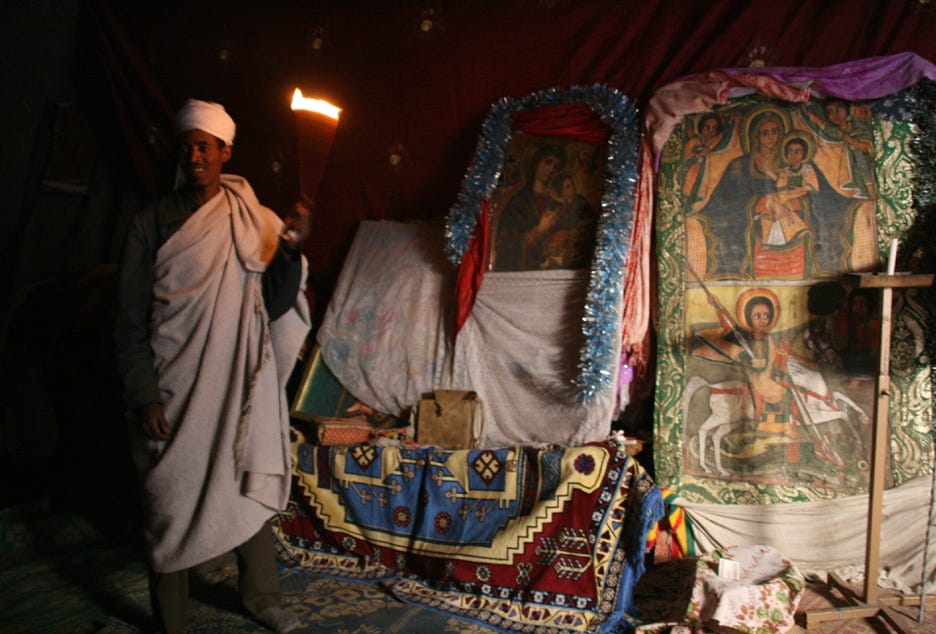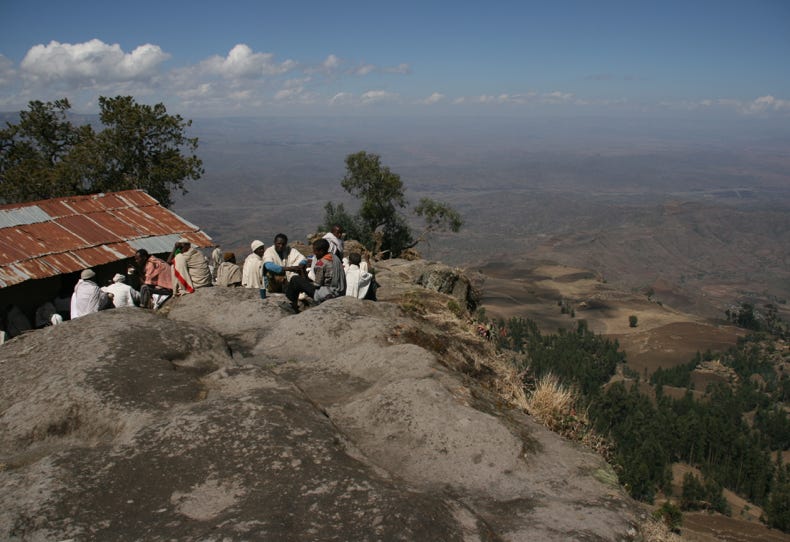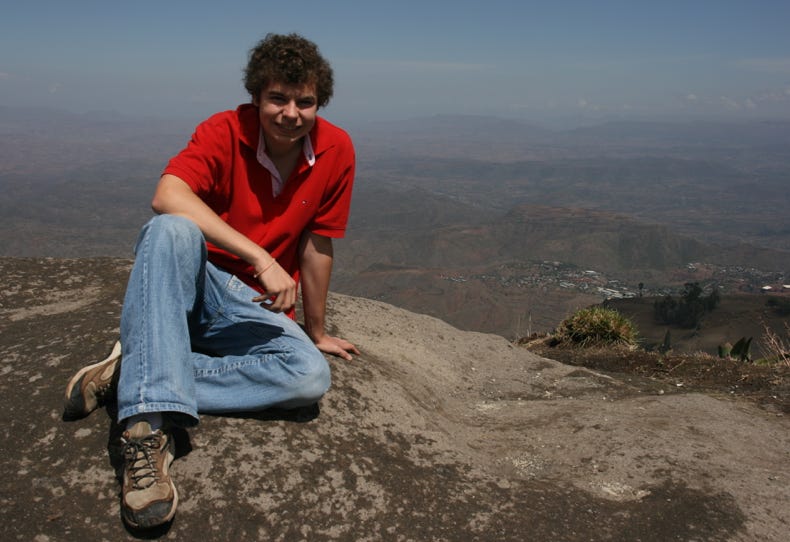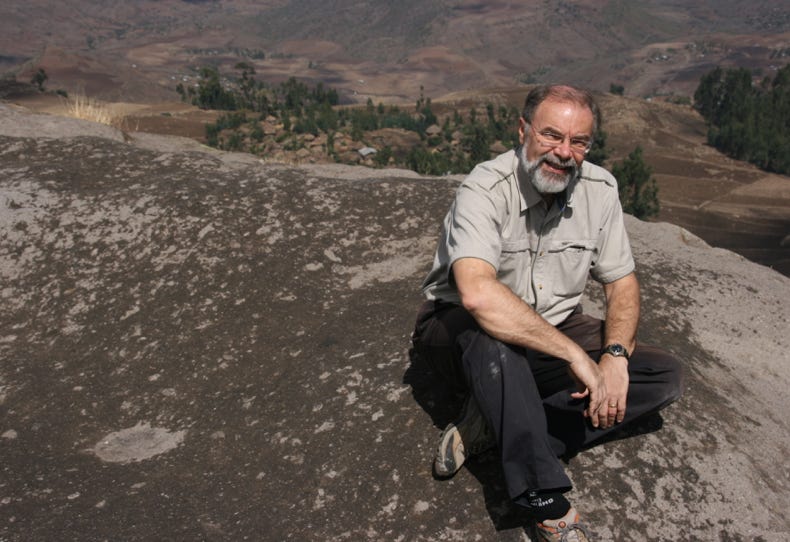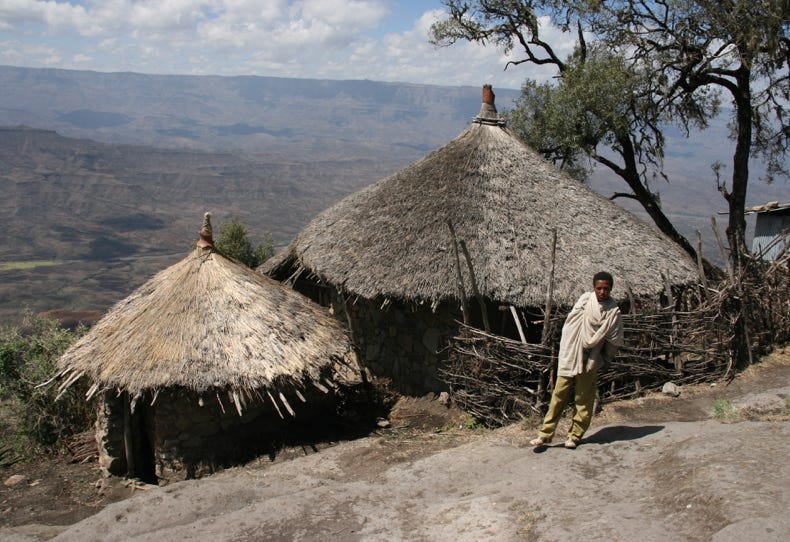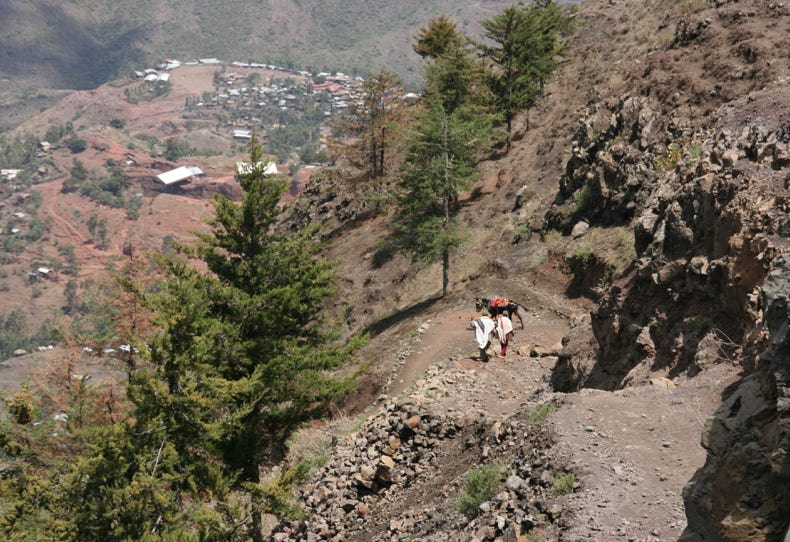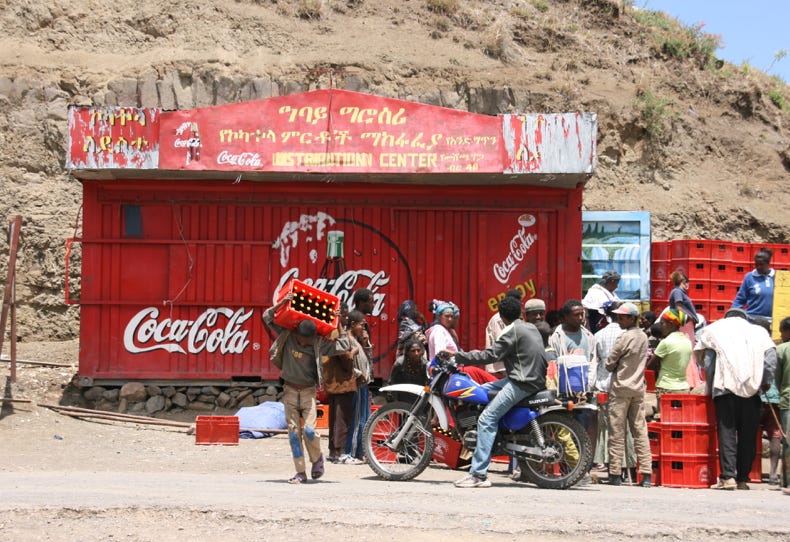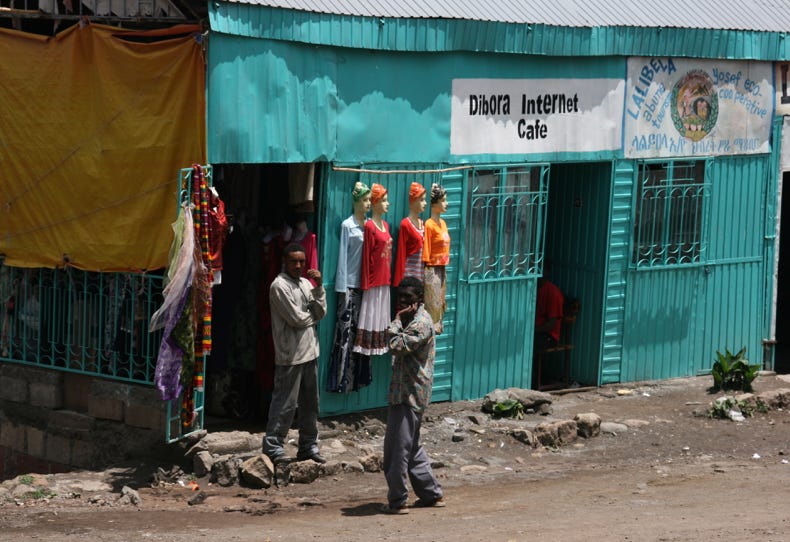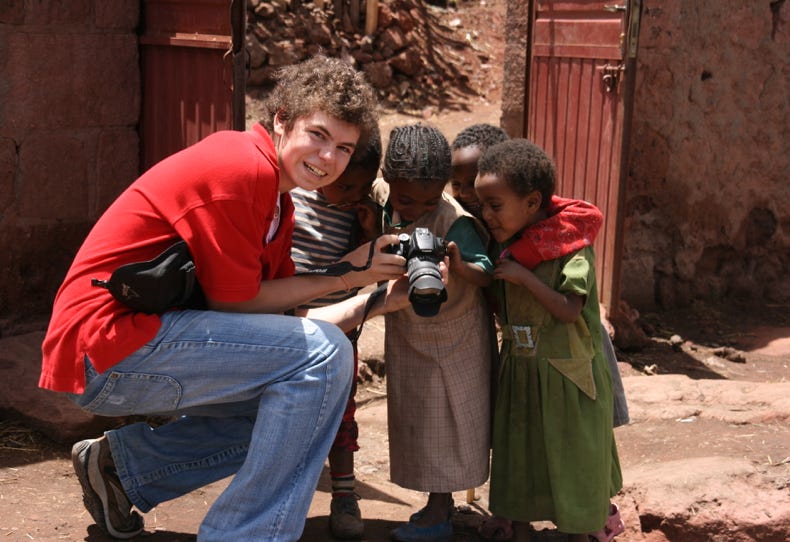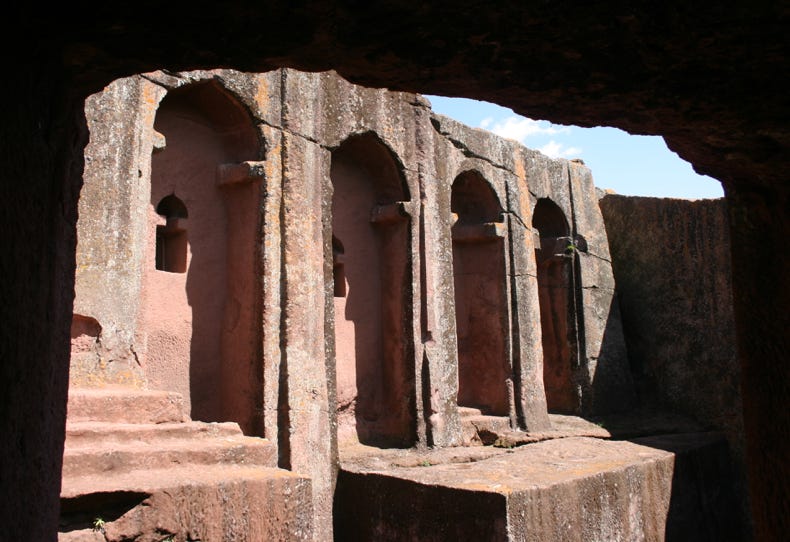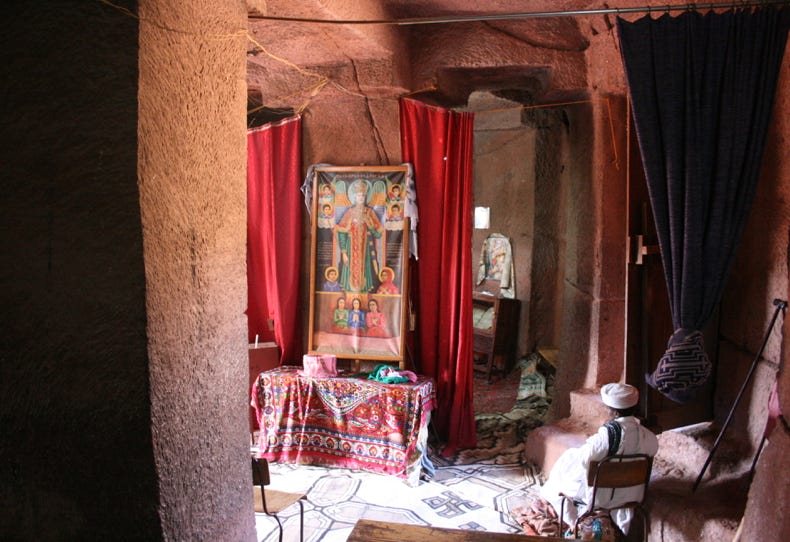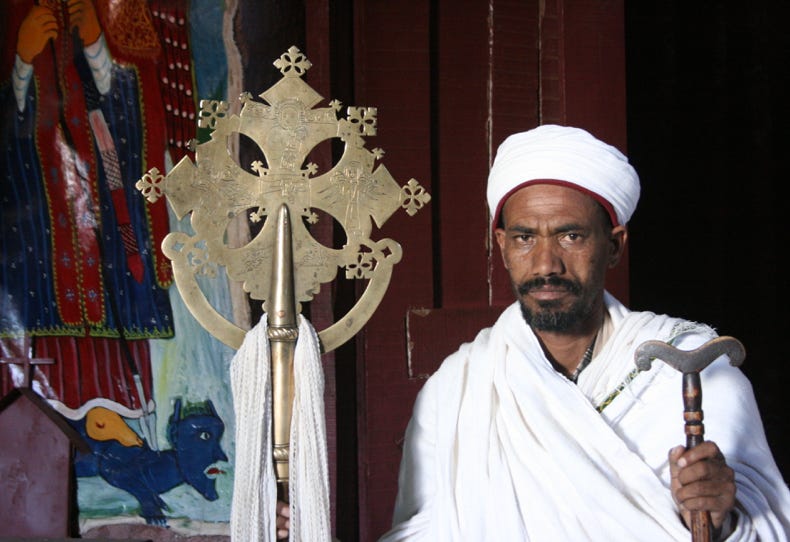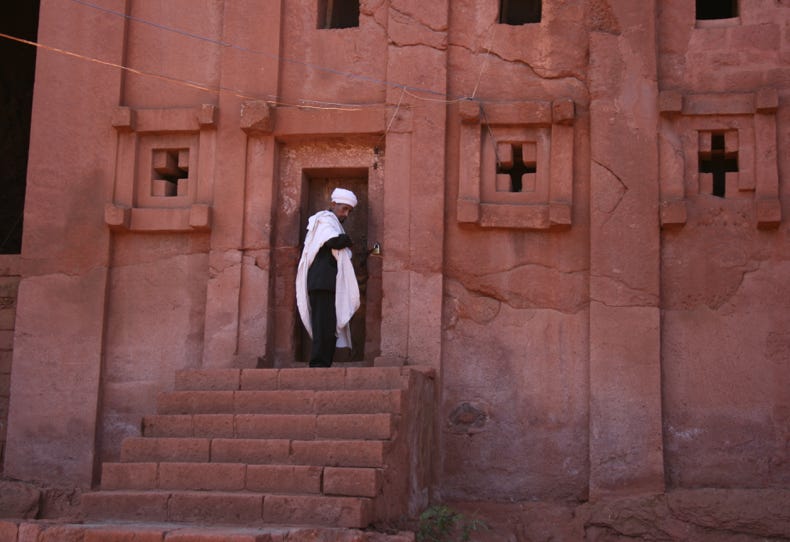

It was a joyous sight to behold when I woke in Lalibela at 5:45 am this morning - clear blue skies, sunny weather, and a magical view looking across the valley of the River Jordan. The view was the nearest thing I have ever experienced to the pictures one sees of Israel during biblical times, as white robed people criss-crossed the arid hillsides, some with mules in tow following them.
The reason that the good weather made me so happy was that I had organised two mules to take Andy and I for a trek up the mountain that looms over Lalibela on a track that leads to the Ashetan Maryam monastery. Actually, the monastery was not the main attraction; I was keen to see something of the spectacular countryside around Lalibela, and I had heard that this trek involved amazing views across the valleys from cliff-side pathways and passages through several small rural villages.
So after breakfast, we met the mule handlers outside our hotel at 7:30 am. The mule trip began by riding through the town, and then onto a steep, winding ascent up into the mountains, a trip of 8 kilometres involving a climb of 600 metres up to an altitude of 3200 metres. I think mules must be the ultimate all-terrain vehicle, as they were able to negotiate the treacherous, rocky pathways with apparent ease, if not speed. Actually, my mule seemed somewhat more reluctant than Andrew’s to attempt a few of the steeper sections of the trail, maybe being a bit lazy, or less likely because my mule was carrying a greater weight, or even less likely because it had a more philosophical temperament - that is until the mule handler’s whip cracked. People claim that mules are stupid creatures, but I think that any animal that can defecate and keep walking at the same time has skills of multi-tasking that other creatures should admire and learn from!
Some sections of the climb were so steep that we had to dismount and walk on foot, and it was actually a pleasure to be using different muscles to those we were using to maintain our grip on the mules. We completed the climb in two hours, arriving at our destination - the Ashetan Maryam monastery - at about 9:30 am. The air was crystal clear after yesterday’s rainfall, and the views from the monastery were superb in all directions. The local priests believe that they are closer to heaven and God in this high, isolated monastery, and on a day such as we experienced, it was easy to feel that were indeed at a very special place.
Compared with the churches we had visited yesterday, the architecture of this rock-hewn monastery was unimpressive despite its stunning location. It was carved in a softer volcanic rock than the churches in Lalibela town, and thus the ravages of weathering and erosion had taken a greater toll. But what it lacked in architectural elegance, it made up for in atmosphere. We were fortunate to be visiting on the 5th day of the month, which coincided with a special communion ceremony conducted on the hilltop rock to mark Jesus’ feast day. Priests were distributing barley wine and holy bread, and we were invited to take part, which of course we did.
Rather than ride the mules downhill again, Andy and I chose to walk the whole way. We wanted the exercise (not that an 8 km downhill trek is very arduous, even at this moderately high altitude), but in any case, the steepness of the descent and the loose rocky surface made about half the trek unsuitable for a mule ride anyway. We arrived back in Lalibela township a little before 12:30 pm, just in nice time for yet another lunch of injera.
At a little after 2:00 pm, we began exploring the remainder of the rock-hewn churches that we had not had time to see yesterday, the four churches known as the south-eastern group of churches. These were more intimate in scale than the ones we had explored the day before, but no less interesting for that.
Our first church was Bet Gabriel-Rufael. The outward appearance of this church was quite distinctive for two reasons, First, flanking the pathway approaching the church, there was a thin ridge of sloping hewn rock known as the ‘Way to Heaven’, symbolising that the journey of life without faith is treacherous and that the fall is fatal. Second, whereas most of the churches in Lalibela are entered from the excavated pit surrounding them, Bet Gabriel-Rufael was approached via a new (i.e. only 500 years old) elevated bridge that crossed the moat-like pit beneath. The interior had an unusual irregular shape that has caused scholars to speculate that it was originally used for a different purpose. A large portion of the roof collapsed during an earthquake about 60 years ago, and so all-in-all, the interior really failed to live up to the promise of its quite spectacular facade.
A long, unlit tunnel joined Bet Gabriel-Rufael with the second church of our visit, Bet Merkorios. The tunnel was supposed to symbolise the journey from the darkness of hell into the light of heaven. A large proportion of this church had also collapsed, and so the size of the interior is now a small fraction of its original size. Thus, its main areas of interest were some beautiful but somewhat worn frescoes and the priest’s crosses which, as always, he was happy to show us without asking in return for the expectation (and I mean extremely strong expectation!) of a small donation.
The third church. Bet Amanuel, is considered to be the most finely carved church in Lalibela, and perhaps therefore it may have been a former royal chapel. Its exterior and interior walls featured a very precise, horizontal banding in the carving of the rock, imitating an ancient Ethiopian building style that alternated layers of wood and stone.
The final church we visited was called Bet Abba Libanos. This was unique in Lalibela as it was a hypogenous building. ‘Hypogenous’ was my new word for today, although I don’t know when I will be able to use it again, because it means a building whose floor and roof are attached to the rock strata, but whose walls are free from the surrounding rock. In this sense, Bet Abba Libanos is supposed to resemble some of the buildings in Petra (Jordan), but having never been there, I can’t say whether this is so or not. Although it looked quite large on the outside, its interior was in fact quite tiny. We were told that the church had been built in a single night by King Lalibela’s wife, Meskel Kebra, with the help of some very construction-oriented angels.
Our inspection of the churches was now complete - we had seen every rock-hewn church in the town of Lalibela - and as we had a couple of hours free before dinner, I took the opportunity to grab a quick nap (the mule trek must have made me more tired than I realised in my exhilaration!). Dinner this evening was identical to today’s lunch, which was identical to yesterday’s dinner - injera. Anyone who cannot handle injera would probably be quite hungry in Ethiopia!
